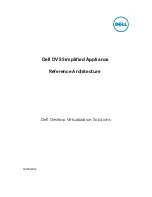
Configuring Slots and Ports on a Switch
ExtremeWare XOS 11.3 Concepts Guide
124
Adding and Deleting Ports in a Load-Sharing Group
Ports can be added or deleted dynamically in a load-sharing group, or LAG. To add or delete ports
from a load-sharing group, use the following commands:
configure sharing <port> add ports <port_list>
configure sharing <port> delete ports <port_list>
Configuring Load Sharing on the BlackDiamond 8800 Family of Switches and the
Summit X450 Switch
The following rules apply to load sharing on the BlackDiamond 8800 family of switches and the
Summit X450 switch:
●
One static LAG can contain up to 8 ports.
●
The maximum number of LAGs is 32.
●
Any broadcast, multicast, or unknown unicast packet is transmitted on a single port of a LAG.
●
You can configure only the address-based load-sharing algorithm.
●
The default load-sharing algorithm is L2 address-based aggregation.
NOTE
See
“Configuring LACP” on page 124
for the maximum number of links, selected and standby, per LACP.
Configuring Load Sharing on the BlackDiamond 10K Series of Switches
The following rules apply to load sharing on the BlackDiamond 10K series of switches:
●
One static LAG can contain up to 16 ports.
●
The maximum number of LAGs is 128.
●
You cannot specify L2 or L3 address-based load sharing.
●
The default load-sharing algorithm is port-based aggregation.
NOTE
See
“Configuring LACP” on page 124
for the maximum number of links, selected and standby, per LACP.
Load Sharing Rules and Restrictions for All Switches
Additionally, the following rules apply to load sharing on
all
switches:
●
The ports in the LAG do not need to be contiguous.
●
A LAG that spans multiple modules must use ports that have the same maximum bandwidth
capability, with one exception—you can mix media type on 1 Gbps ports.
Configuring LACP
To configure LACP, or dynamic link aggregation, you must, again, first create a LAG. The first port in
the LAG serves as the logical port for the LAG. This is the reference port used in configuration
Summary of Contents for ExtremeWare XOS 11.3
Page 20: ...Contents ExtremeWare XOS 11 3 Concepts Guide 20...
Page 25: ...1 Using ExtremeWare XOS...
Page 26: ......
Page 38: ...ExtremeWare XOS Overview ExtremeWare XOS 11 3 Concepts Guide 38...
Page 58: ...Accessing the Switch ExtremeWare XOS 11 3 Concepts Guide 58...
Page 146: ...Configuring Slots and Ports on a Switch ExtremeWare XOS 11 3 Concepts Guide 146...
Page 218: ...Status Monitoring and Statistics ExtremeWare XOS 11 3 Concepts Guide 218...
Page 240: ...Virtual LANs ExtremeWare XOS 11 3 Concepts Guide 240...
Page 248: ...Virtual Routers ExtremeWare XOS 11 3 Concepts Guide 248...
Page 278: ...Access Lists ACLs ExtremeWare XOS 11 3 Concepts Guide 278...
Page 288: ...Routing Policies ExtremeWare XOS 11 3 Concepts Guide 288 entry deny_rest if then deny...
Page 344: ...Security ExtremeWare XOS 11 3 Concepts Guide 344...
Page 393: ...2 Using Switching and Routing Protocols...
Page 394: ......
Page 454: ...Spanning Tree Protocol ExtremeWare XOS 11 3 Concepts Guide 454...
Page 484: ...Extreme Standby Router Protocol ExtremeWare XOS 11 3 Concepts Guide 484...
Page 514: ...IPv4 Unicast Routing ExtremeWare XOS 11 3 Concepts Guide 514...
Page 530: ...IPv6 Unicast Routing ExtremeWare XOS 11 3 Concepts Guide 530...
Page 538: ...RIP ExtremeWare XOS 11 3 Concepts Guide 538...
Page 556: ...OSPF ExtremeWare XOS 11 3 Concepts Guide 556...
Page 566: ...OSPFv3 ExtremeWare XOS 11 3 Concepts Guide 566...
Page 589: ...3 Appendixes...
Page 590: ......
Page 640: ...CNA Agent ExtremeWare XOS 11 3 Concepts Guide 640...
Page 670: ...Glossary ExtremeWare XOS 11 3 Concepts Guide 670...
Page 698: ...Index ExtremeWare XOS 11 3 Concepts Guide 698...
















































